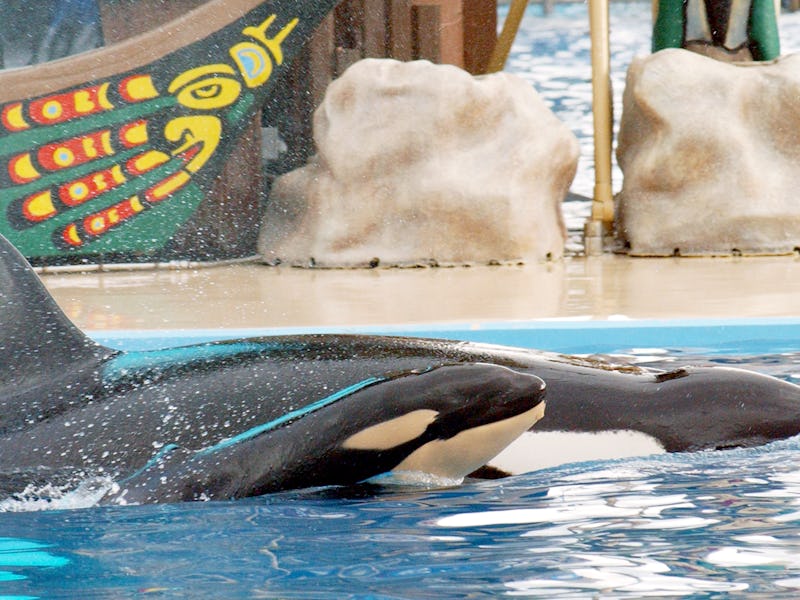SeaWorld Is Suing California for the Right to Breed Killer Whales
The theme park probably has the legal, if not the moral, upper hand.

SeaWorld has filed a lawsuit to challenge a California ruling that would end the killer whale breeding program at the San Diego theme park.
Back in October, the California Coastal Commission approved a $100 million expansion of the orca habitat at the facility, but at the last minute added a provision that the breeding, sale, and transfer of killer whales would be prohibited.
This, in effect, would limit the park’s orca pod to the 11 it already houses. When those animals die, it would be the last of the captive killer whale program in California.
The company could continue breeding, sales, and transfers at its parks outside of the state. As of the publication of the company’s 2014 annual report, SeaWorld owned 30 killer whales, of which six were under a lease agreement to an outside company.
SeaWorld argues in the court filing that the commission overstepped its jurisdiction by adding those conditions.
The California Coastal Commission is charged with making decisions regarding land and water use in the coastal environment. The orcas are not part of the marine environment, SeaWorld asserts, since they are born in captivity (the company hasn’t taken whales from the wild in 30 years) and remain there for their entire lives. The treatment of the captive whales is currently regulated federally.
And, regardless of ethical arguments against keeping orcas in captivity, SeaWorld’s legal point here seems strong. Does a regulatory body mandated to protect the natural environment get a say on the rights of animals that have been effectively removed from it?
Some of the commissioners apparently believed so. Dayna Bochco, who suggested the no-breeding amendment, told the Guardian that she agreed with scientist testimony that orcas were suffering in captivity and don’t belong there.
The commission appears to want to have it both ways — a bigger, more natural-looking enclosure for the existing animals, but no means for SeaWorld to continue to make money off its investment once those whales are gone.
SeaWorld already has agreed to change its practices after the documentary Blackfish brought public attention to the issue. By 2017, there will be no more killer whale shows at the park, the company announced recently. Instead, the orcas will be on display to watch as they swim around their pools — think less circus, more zoo. The proposed habitat expansion was part of that plan.
Is that better or worse? If you’re going to keep an intelligent animal cooped up, would it be better to give them a job to do, a challenge to complete, rather than just have them swim in circles until the next feeding time?
Certainly, orcas aren’t the only intelligent mammal that we keep in captivity, away from their natural behaviors and habitat. Is what’s wrong for a killer whale wrong for a polar bear, too? And what degree of moral ambiguity will humans accept as an acceptable cost so that future generations of children can be blown away at the IRL sight of these magnificent creatures?
These questions won’t be answered by the matter in front of the courts. But the future of SeaWorld San Diego may be.